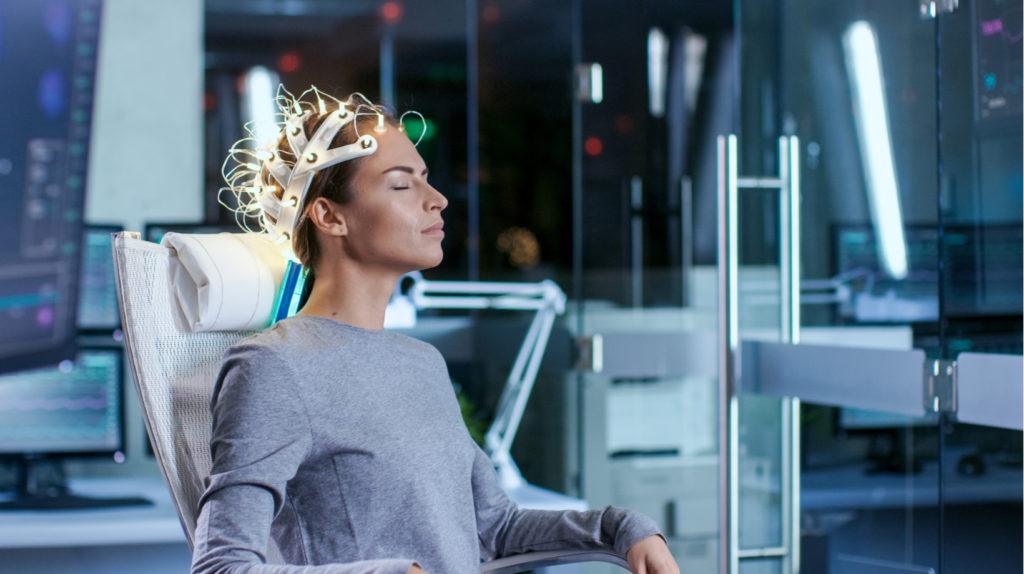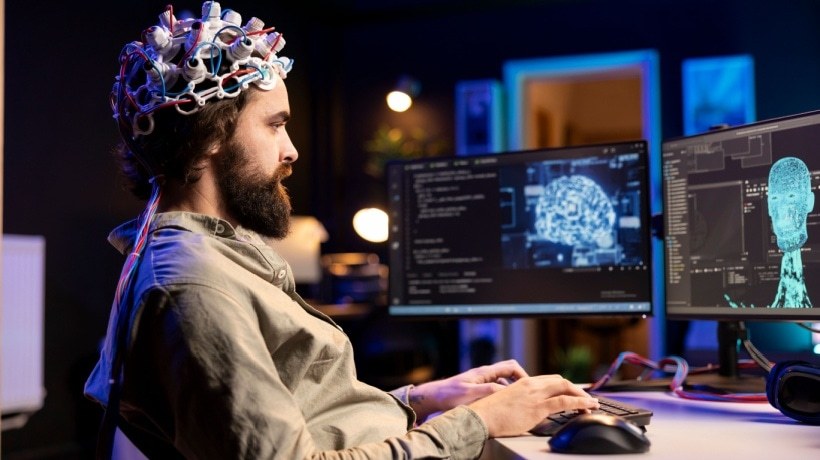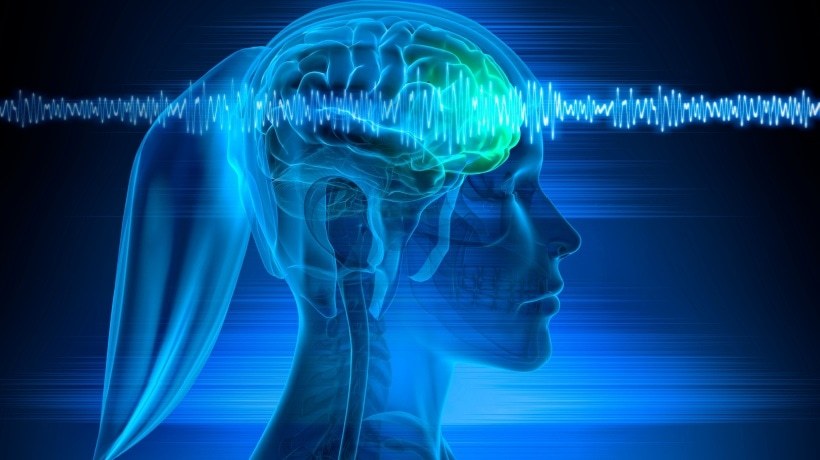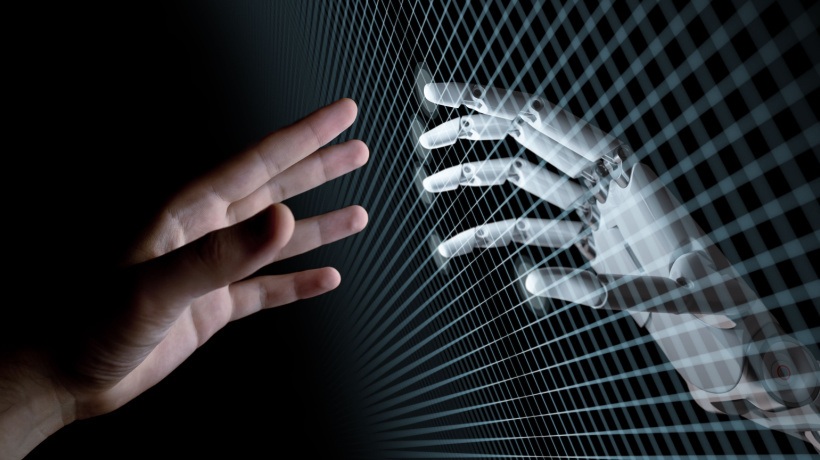Discussing Brain-Computer Interfaces Regarding Learning Assessment
Assessment, or as a matter of fact, the lack of highly objective assessment methods is a fundamental problem within many learning systems and eLearning platforms, both mobile and online. Currently, the assessment stage of most eLearning and eTraining systems relies on various traditional methods of assessment converted in electronic format, out of which the most evolved are adaptive computer-based tests. Systems that provide customized feedback to the learner are still in their infancy and almost all rely on data collected through users’ testing.
Mental Workload And Attention
Mental workload is a generic term which can cover or apply to different and varied cognitive processes and mental states. It could apply, for example, to a memorization task, driving task, lecture task and cognitive task [1]. Such tasks are very common during learning, and constitute the basic building blocks for learner’s behavior vis-à-vis the learning system.
Attention, the first step in the learning process, is the behavioral and cognitive procedure of selectively concentrating on a particular piece of information while ignoring other perceivable factors. Attention requires the allocation of limited processing resources for a limited amount of time. Both, mental workload and attention, can be objectively quantified using, non-invasive Brain-Computer Interfaces.
What Is A Brain-Computer Interface?
It may sound science-fiction, however, Brain-Computer Interfaces (in short BCIs) have been around for a while. Maybe not in a “pleasant-to-wear” format, but rather in a “Frankenstein-like” scenario with jelly-based sensors attached to the skin of a shaved head. Fundamentally, a BCI is a direct communication pathway between the brain and an external device like a computer. BCIs are often directed at assisting, augmenting, or repairing human cognitive or sensory-motor functions, and are designed to collect brainwave activity - the combination of synchronized electrical activity in the brain. BCI systems can be described briefly by the following characteristics [3]:
- Invasive vs. Non-Invasive (ElectroEncephaloGraph - EEG)
The invasive ones require a sophisticated setup with the sensor attached to the users’ head skin, while non-invasive ones use dry sensors attached to the ear lobe and forehead; - Based On The Data Collection Method
e.g., functional Magnetic Resonance Imaging (fMRI) or MagnetoEncephaloGrams [4]. fMRI systems require a sophisticated setup to collect data however they provide high accuracy and the visualization of temporality related to the brain waves; - Portable vs. Stationary
Some EEG systems are portable while the fMRI systems have complex hardware components and hence stationary; - Steady-State Somatosensory Evoked Potential (SSEP) vs. Slow Cortical Potentials (SCP) [5]
SSEP measure the time it takes for the brain to respond to sensory stimulation (through sight, sound, or touch). The SCP are slow (300 ms to a few seconds) event-related, direct-current shifts in the EEG, originating from the upper cortical layer. Compared with EEG activity, measured with high frequency, SCP measurements are averaging the activity over larger periods of time to provide a trend for brain activity.
Luckily, with the development of “dry” sensors and the evolution of technology, BCIs have evolved into cool and fashionable new gadgets for everyone to play with. Some commercial hybrid BCIs [5] merge electrocardiograms (ECG) with EEG and add heart bit rate as an additional communication channel.
Among Other Things, BCIs Can "Read"
Brainwaves categorized as follows [6]:
- Delta waves (.5 to 3 Hz) and Theta waves (3 to 8 Hz) are the slowest brain waves occurring during the deepest state of sleep and meditation.
- Alpha waves (8 to 12 Hz) suggest brain idling and are indicative of inattentive states or consciously practicing meditation.
- Beta waves (12-30 Hz) govern the normal waking states of consciousness and occur when attention is directed towards cognitive tasks. Such waves are indicative of alertness, attentiveness, and engagement in problem-solving or decision making.
- Gamma waves (25 to 100 Hz) usually drift around 40 Hz and are the fastest of the brain wave bandwidths. They indicate simultaneous processing of information from different brain areas and are associated with higher states of conscious perception.
Applying data processing algorithms on the collected data can provide real-time information on the state of attention or meditation of the learner. Additional actions like Eye-Blink detection is also possible and may suggest, in combination with other factors, an advanced degree of tiredness or potential attention deficit anomalies.
References:
[1] Heger D., Putze F. and Schultz T. (2010) Online Workload Recognition from EEG Data during Cognitive Tests and Human-Machine Interaction. In: Dillmann R., Beyerer J., Hanebeck UD., Schultz T. (eds) KI 2010: Advances in Artificial Intelligence. KI 2010. Lecture Notes in Computer Science, Vol. 6359. Springer, Berlin, Heidelberg.
[2] Allison BZ., Wolpaw EW. and Wolpaw JR. (2007) "Brain-computer interface systems: progress and prospects". Expert Rev. Med. Devices, Vol. 4(4), pp. 463-474.
[3] Schalk G. and Leuthardt EC. (2011) “Brain-computer interfaces using electrocorticographic signals” IEEE Rev Biomed Eng., Vol. 4, pp. 140-154. doi: 10.1109/RBME.2011.2172408.
[4] Sangtae A., Kiwoong K. and Chan JS. “Steady-State Somatosensory Evoked Potential for Brain-Computer Interface - Present and Future”, Frontiers in Human Neuroscience, Vol. (9), doi:10.3389/fnhum.2015.00716, ISSN=1662-5161.
[5] Neurosky BioSensors EEG. (2019) Retrieved from: http://neurosky.com/biosensors/eeg-sensor/.
[6] Bergland C. (2015) “Alpha Brain Waves Boost Creativity and Reduce Depression”. Retrieved from: https://www.psychologytoday.com/us/blog/the-athletes-way/201504/alpha-brain-waves-boost-creativity-and-reduce-depression.








